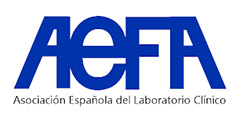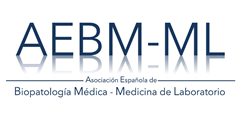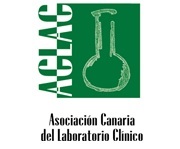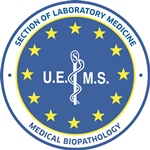Sung H, Ferlay J, Siegel RL, Laversanne M, Soerjomataram I, Jemal A, et al. Global Cancer Statistics 2020: GLOBOCAN Estimates of Incidence and Mortality Worldwide for 36 Cancers in 185 Countries. CA Cancer J Clin 2021;71:209-49.
DOI: 10.3322/caac.21660
Carioli G, Bertuccio P, Boffetta P, Levi F, La Vecchia C, Negri E, et al. European cancer mortality predictions for the year 2020 with a focus on prostate cancer. Ann Oncol 2020;31:650-8.
DOI: 10.1016/j.annonc.2020.02.009
Klotz L. Overdiagnosis in urologic cancer: For World Journal of Urology Symposium on active surveillance in prostate and renal cancer. World J Urol2022;40:1-8.
DOI: 10.1007/s00345-020-03523-2
Hugosson J, Roobol MJ, Månsson M, Tammela TLJ, Zappa M, Nelen V, et al. A 16-yr Follow-up of the European Randomized study of Screening for Prostate Cancer. Eur Urol 2019;76:43-51.
DOI: 10.1016/j.eururo.2019.02.009
Schröder FH, Hugosson J, Roobol MJ, Tammela TL, Ciatto S, Nelen V, et al. Screening and prostate-cancer mortality in a randomized European study. N Engl J Med 2009;360:1320-8.
DOI: 10.1056/NEJMoa0810084
Andriole GL, Crawford ED, Grubb RL 3rd, Buys SS, Chia D, Church TR, et al. Mortality results from a randomized prostate-cancer screening trial. N Engl J Med 2009;360:1310-9.
DOI: 10.1056/NEJMoa0810696
Barry MJ. Screening for prostate cancer-the controversy that refuses to die. N Engl J Med 2009;360:1351-4.
DOI: 10.1056/NEJMe0901166
Schröder FH, Hugosson J, Roobol MJ, Tammela TL, Ciatto S, Nelen V, et al. Prostate-cancer mortality at 11 years of follow-up. N Engl J Med 2012;366:981-90.
DOI: 10.1056/NEJMoa1113135
Schröder FH, Hugosson J, Roobol MJ, Tammela TL, Zappa M, Nelen V, et al. Screening and prostate cancer mortality: results of the European Randomised Study of Screening for Prostate Cancer (ERSPC) at 13 years of follow-up. Lancet 2014;384:2027-35.
DOI: 10.1016/S0140-6736(14)60525-0
Andriole GL, Crawford ED, Grubb RL 3rd, Buys SS, Chia D, Church TR, et al. Prostate cancer screening in the randomized Prostate, Lung, Colorectal, and Ovarian Cancer Screening Trial: mortality results after 13 years of follow-up. J Natl Cancer Inst 2012;104:125-32.
DOI: 10.1093/jnci/djr500
Pinsky PF, Prorok PC, Yu K, Kramer BS, Black A, Gohagan JK, et al. Extended mortality results for prostate cancer screening in the PLCO trial with median follow-up of 15 years. Cancer 2017;123:592-9.
DOI: 10.1002/cncr.30474
Pinsky PF, Miller E, Prorok P, Grubb R, Crawford ED, Andriole G. Extended follow-up for prostate cancer incidence and mortality among participants in the Prostate, Lung, Colorectal and Ovarian randomized cancer screening trial. BJU Int 2019;123:854-60.
DOI: 10.1111/bju.14580
Martin RM, Donovan JL, Turner EL, Metcalfe C, Young GJ, Walsh EI, et al. Effect of a Low-Intensity PSA-Based Screening Intervention on Prostate Cancer Mortality: The CAP Randomized Clinical Trial. JAMA 2018;319:883-95.
DOI: 10.1001/jama.2018.0154
Chou R, Croswell JM, Dana T, Bougatsos C, Blazina I, Fu R, et al. Screening for prostate cancer: a review of the evidence for the U.S. Preventive Services Task Force. Ann Intern Med 2011;155:762-71.
DOI: 10.7326/0003-4819-155-11-201112060-00375
Li J, Berkowitz Z, Hall IJ. Decrease in Prostate Cancer Testing Following the US Preventive Services Task Force (USPSTF) Recommendations. J Am Board Fam Med 2015;28:491-3.
DOI: 10.3122/jabfm.2015.04.150062
Qaseem A, Barry MJ, Denberg TD, Owens DK, Shekelle P. Screening for prostate cancer: a guidance statement from the Clinical Guidelines Committee of the American College of Physicians. Ann Intern Med 2013;158:761-9.
DOI: 10.7326/0003-4819-158-10-201305210-00633
Livingston CJ, Freeman RJ, Mohammad A, Costales VC, Titus TM, Harvey BJ, et al. Choosing Wisely® in preventive medicine: the American College of Preventive Medicine’s Top 5 List of Recommendations. Am J Prev Med 2016;51:141-9.
DOI: 10.1016/j.amepre.2016.03.009
Screening for Prostate Cancer. UK NSC screening recommendation [citado el 26 abril de 2022]. Disponible en: https://view-health-screening-recommendations.service.gov.uk/prostate-cancer/
GuíaSalud. Recomendaciones de no hacer [citado el 26 abril de 2022]. Disponible en: https://portal.guiasalud.es/no-hacer/no-realizar-de-forma-sistematica-la-determinacion-de-psa-a-individuos-asintomaticos-sin-antecedentes-familiares-de-primer-grado-de-cancer-de-prostata/
Ministerio de Sanidad, Consumo y Bienestar Social. Estado de la evidencia y recomendaciones sobre actividades de cribado en el SNS. Ponencia de cribado poblacional de la Comisión de Salud Pública. Madrid: Ministerio de Sanidad, Consumo y Bienestar Social; abril 2019.
Brenes Bermúdez FJ, Alcántara Montero A. ¿Detección precoz o cribado en la prevención del cáncer de próstata? Semergen 2017;43:100-8.
DOI: 10.1016/j.semerg.2016.01.014
Ministerio de Sanidad, Servicios Sociales e Igualdad. Sociedad Española de Medicina de Familia y Comunitaria. Compromiso por la Calidad de las Sociedades Científicas en España. Ministerio de Sanidad, Servicios Sociales e Igualdad; 2018. [citado el 17 de junio 2022]. Disponible en: https://www.sanidad.gob.es/organizacion/sns/planCalidadSNS/pdf/SOCIEDAD_ESP_M_FAMC_AP_MGF_OK.pdf
Asociación Española de Biopatología Médica-Medicina del Laboratorio. Decisiones inteligentes desde el laboratorio: de elegir sabiamente a no hacer. Madrid: Asociación Española de Biopatología Médica-Medicina del Laboratorio; 2021.
Paquette EL, Sun L, Paquette LR, Connelly R, Mcleod DG, Moul JW. Improved prostate cancer-specific survival and other disease parameters: impact of prostate-specific antigen testing. Urology 2002;60:756-9.
DOI: 10.1016/S0090-4295(02)01960-X
Bandini M, Mazzone E, Preisser F, Nazzani S, Zaffuto E, Marchioni M, et al. Increase in the Annual Rate of Newly Diagnosed Metastatic Prostate Cancer: A Contemporary Analysis of the Surveillance, Epidemiology and End Results Database. Eur Urol Oncol 2018;1:314-20.
DOI: 10.1016/j.euo.2018.04.013
Gulati R, Tsodikov A, Etzioni R, Hunter-Merrill RA, Gore JL, et al. Expected population impacts of discontinued prostate-specific antigen screening. Cancer 2014;120:3519-26.
DOI: 10.1002/cncr.28932
Schröder FH, Hugosson J, Carlsson S, Tammela T, Määttänen L, Auvinen A, et al. Screening for prostate cancer decreases the risk of developing metastatic disease: findings from the European Randomized Study of Screening for Prostate Cancer (ERSPC). Eur Urol 2012;62:745-52.
DOI: 10.1016/j.eururo.2012.05.068
Grossman DC, Curry SJ, Owens DK, Bibbins-Domingo K, Caughey AB, Davidson KW, et al. Screening for prostate cancer: US Preventive Services Task Force recommendation statement. JAMA 2018;319:1901-13.
DOI: 10.1001/jama.2018.3710
Jahn JL, Giovannucci EL, Stampfer MJ. The high prevalence of undiagnosed prostate cancer at autopsy: implications for epidemiology and treatment of prostate cancer in the Prostate-specific Antigen-era. Int J Cancer 2015;137:2795-802.
DOI: 10.1002/ijc.29408
Campbell JM, Raymond E, O'Callaghan ME, Vincent AD, Beckmann KR, Roder D, et al. Optimum Tools for Predicting Clinical Outcomes in Prostate Cancer Patients Undergoing Radical Prostatectomy: A Systematic Review of Prognostic Accuracy and Validity. Clin Genitourin Cancer 2017;15:e827-e34.
DOI: 10.1016/j.clgc.2017.06.001
Lepor H, Donin NM. Gleason 6 prostate cancer: serious malignancy or toothless lion? Oncology (Williston Park) 2014;28:16-22.
Perlis N, Klotz L. Contemporary Active Surveillance: Candidate Selection, Follow-up Tools, and Expected Outcomes. Urol Clin North Am 2017;44:565-74.
DOI: 10.1016/j.ucl.2017.07.005
Huguet J, Alcover J, Fernández PL, Valduvieco I, Casas F, Izquierdo L, et al. Protocolo de cáncer de próstata. En: Huguet J. (ed). Urología oncológica práctica y multidisciplinar. Madrid: Springer Healthcare Ibérica. p. 3-24.
Grubb RL, Pinsky P, Prorok PC, Andriole GL. Screening for cancer: lessons learned from the prostate, lung, colorectal, and ovarian cancer screening trial. Eur Urol 2015;68:545-6.
DOI: 10.1016/j.eururo.2015.04.026
De Koning HJ, Gulati R, Moss SM, Hugosson J, Pinsky PF, Berg CD, et al. The efficacy of prostate-specific antigen screening: Impact of key components in the ERSPC and PLCO trials. Cancer 2018;124:1197-206.
DOI: 10.1002/cncr.31178
Heijnsdijk EAM, Adolfsson J, Auvinen A, Roobol MJ, Hugosson J, de Koning HJ. The Impact of Design and Performance in Prostate-Specific Antigen Screening: Differences Between ERSPC Centers. Eur Urol 2019;76:276-9.
DOI: 10.1016/j.eururo.2019.04.007
Filella X, Foj L. Prostate cancer detection and prognosis: from Prostate Specific Antigen (PSA) to exosomal biomarkers. Int J Mol Sci 2016;17:1784.
DOI: 10.3390/ijms17111784
Parekh DJ, Punnen S, Sjoberg DD, Asroff SW, Bailen JL, Cochran JS, et al. A multi-institutional prospective trial in the USA confirms that the 4Kscore accurately identifies men with high-grade prostate cancer. Eur Urol 2015;68:464-70.
DOI: 10.1016/j.eururo.2014.10.021
Filella X, Foj L, Alcover J, Augé JM, Molina R, Jiménez W. The influence of prostate volume in prostate health index performance in patients with total PSA lower than 10 μg/L. Clin Chim Acta 2014;436:303-7.
DOI: 10.1016/j.cca.2014.06.019
Filella X, Foj L, Wijngaard R, Luque P. Value of PHI and PHID in the detection of intermediate- and high-risk prostate cancer. Clin Chim Acta 2022;531:277-82.
DOI: 10.1016/j.cca.2022.04.992
Ström P, Nordström T, Aly M, Egevad L, Grönberg H, Eklund M. The Stockholm-3 Model for Prostate Cancer Detection: Algorithm Update, Biomarker Contribution, and Reflex Test Potential. EurUrol 2018;74:204-10.
DOI: 10.1016/j.eururo.2017.12.028
Viste E, Vinje CA, Lid TG, Skeie S, Evjen-Olsen Ø, Nordström T, et al. Effects of replacing PSA with Stockholm3 for diagnosis of clinically significant prostate cancer in a healthcare system - the Stavanger experience. Scand J Prim Health Care 2020;38:315-22.
DOI: 10.1080/02813432.2020.1802139
Trapé J, Filella X, Alsina-Donadeu M, Juan-Pereira L, Bosch-Ferrer Á, Rigo-Bonnin R. Increased plasma concentrations of tumour markers in the absence of neoplasia. Clin ChemLab Med 2011;49:1605-20.
DOI: 10.1515/CCLM.2011.694
Cohen P, Peehl DM, Graves HC, Rosenfeld RG. Biologicaleffects of prostate specific antigen as an insulin-like growth factor binding protein-3 protease. J Endocrinol 1994;142:407-15.
DOI: 10.1677/joe.0.1420407
Stenman UH, Leinonen J, Hakama M, Knekt P, Aromaa A, Teppo L. Serum concentrations of prostate specific antigen and its complex with α1-antichymotrypsin before diagnosis of prostate cancer. Lancet 1994;344:1594-98.
DOI: 10.1016/S0140-6736(94)90405-7
Gann PH, Hennekens CH, Stampfer MJ. A prospective evaluation of plasma prostate-specific antigen for detection of prostatic cancer. JAMA 1995;273:289-94.
DOI: 10.1001/jama.1995.03520280035036
Loeb S, Roehl KA, Antenor JA, Catalona WJ, Suárez BK, Nadler RB. Baseline prostate-specific antigen compared with median prostate specific antigen for age group as predictor of prostate cancer risk in men younger than 60 years old. Urology 2006;67:316-20.
DOI: 10.1016/j.urology.2005.08.040
Lilja H, Ulmert D, Björk T, Becker C, Serio AM, Nilsson JA, et al. Long-term prediction of prostate cancer up to 25 years before diagnosis of prostate cancer using prostate kallikreins measured at age 44 to 50 years. J Clin Oncol 2007;25:431-6.
DOI: 10.1200/JCO.2006.06.9351
Vickers AJ, Cronin AM, Björk T, Manjer J, Nilsson PM, Dahlin A, et al. Prostate specific antigen concentration at age 60 and death or metastasis from prostate cancer: case-control study. BMJ 2010;341:c4521.
DOI: 10.1136/bmj.c4521
Preston MA, Batista JL, Wilson KM, Carlsson SV, Gerke T, Sjoberg DD, et al. Baseline Prostate-Specific Antigen Levels in Mid life Predict Lethal Prostate Cancer. J Clin Oncol 2016;34:2705-11.
DOI: 10.1200/JCO.2016.66.7527
Kovac E, Carlsson SV, Lilja H, Hugosson J, Kattan MW, Holmberg E, et al. Association of Baseline Prostate-Specific Antigen Level with Long-term Diagnosis of Clinically Significant Prostate Cancer Among Patients Aged 55 to 60 Years: A Secondary Analysis of a Cohort in the Prostate, Lung, Colorectal, and Ovarian (PLCO) Cancer Screening Trial. JAMA Netw Open 2020;3:e1919284.
DOI: 10.1001/jamanetworkopen.2019.19284
Arsov C, Albers P, Herkommer K, Gschwend J, Imkamp F, Peters I, et al. A randomized trial of risk-adapted screening for prostate cancer in young men-Results of the first screening round of the PROBASE trial. Int J Cancer 2022;150:1861-9.
DOI: 10.1002/ijc.33940
Randazzo M, Beatrice J, Huber A, Grobholz R, Manka L, Chun FK, et al. A "PSA pyramid" for men with initial prostate-specific antigen ≤ 3 ng/ml: a plea for individualized prostate cancer screening. Eur Urol 2015;68:591-7.
DOI: 10.1016/j.eururo.2014.04.005
Conran CA, Brendler CB, Xu J. Personalized prostate cancer care: from screening to treatment. Asian J Androl 2016;18:505-8.
DOI: 10.4103/1008-682X.179529
Eapen RS, Herlemann A, Washington SL 3rd, Cooperberg MR. Impact of the United States Preventive Services Task Force 'D' recommendation on prostate cancer screening and staging. Curr Opin Urol 2017;27:205-9.
DOI: 10.1097/MOU.0000000000000383
Carlsson SV, Roobol MJ. Improving the evaluation and diagnosis of clinically significant prostate cancer in 2017. Curr Opin Urol 2017;27:198-204.
DOI: 10.1097/MOU.0000000000000382
Remmers S, Roobol MJ. Personalized strategies in population screening for prostate cancer. Int J Cancer 2020;147:2977-87.
DOI: 10.1002/ijc.33045
Prostate Cancer Risk Calculator [citado el 22 junio de 2022]. Disponible en: https://www.prostatecancer-riskcalculator.com/swop-prostate-cancer-research-foundation
Heidenreich A, Bellmunt J, Bolla M, Joniau S, Mason M, Matveev V, et al EAU guidelines on prostate cancer. Part 1: screening, diagnosis, and treatment of clinically localized disease. EurUrol 2011;59:61-71.
Mottet N, Van den Bergh RCN, Briers E, Van den Broeck T, Cumberbatch MG, De Santis M, et al. EAU-EANM-ESTRO-ESUR-SIOG Guidelines on Prostate Cancer-2020 Update. Part 1: Screening, Diagnosis, and Local Treatment with Curative Intent. EurUrol 2021;79:243-62.
Heidenreich A, Bastian PJ, Bellmunt J, Bolla M, Joniau S, Van der Kwast T, et al. EAU guidelines on prostate cancer. part 1: screening, diagnosis, and local treatment with curative intent-update 2013. Eur Urol 2014;65:124-37.
DOI: 10.1016/j.eururo.2013.09.046
Heidenreich A, Abrahamsson PA, Artibani W, Catto J, Montorsi F, Van Poppel H, et al. EAU-EANM-ESTRO-ESUR-ISUP-SIOG Guidelines on Prostate Cancer 2022 [citado el 26 abril de 2022]. Disponible en: https://uroweb.org/guidelines/prostate-cancer
Policy Paper on PSA screening for Prostate Cancer. Has the time come to reconsider structured population-based PSA screening for prostate cancer? [citado el 26 abril de 2022]. Disponible en: https://epad.uroweb.org/wp-content/uploads/EAU_policy-briefing_PSA.pdf
White paper on Prostate Cancer. Recommendations for the EU Cancer Plan to tackle Prostate Cancer [citado el 26 abril de 2022]. Disponible en: https://d56bochluxqnz.cloudfront.net/media/EAU_PCa-WhitePaper.pdf.
Gandaglia G, Albers P, Abrahamsson PA, Briganti A, Catto JWF, Chapple CR, et al. Structured Population-based Prostate-specific Antigen Screening for Prostate Cancer: The European Association of Urology Position in 2019. Eur Urol 2019;76:142-50.
DOI: 10.1016/j.eururo.2019.04.033
Van Poppel H, Hogenhout R, Albers P, Van den Bergh RCN, Barentsz JO, Roobol MJ. Early Detection of Prostate Cancer in 2020 and Beyond: Facts and Recommendations for the European Union and the European Commission. Eur Urol 2021;79:327-9.
DOI: 10.1016/j.eururo.2020.12.010
Van Poppel H, Roobol MJ, Chapple CR, Catto JWF, N'Dow J, Sønksen J, et al. Prostate-specific Antigen Testing as Part of a Risk-Adapted Early Detection Strategy for Prostate Cancer: European Association of Urology Position and Recommendations for 2021. Eur Urol 2021;80:703-11.
DOI: 10.1016/j.eururo.2021.07.024
 Número de descargas:
27277
Número de descargas:
27277
 Número de visitas:
10082
Número de visitas:
10082
 Citas:
0
Citas:
0











